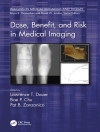G. G. Jackson The pathogenesis of bacterial infection defines the dynamics at an interface of ecologic association of bacteria and host. First, it occurs at the portal of initial contact with a per- missive target cell. The infected cell provides either a passive or a specific receptor for the bacterium or its products, to- gether with ligands and an environment of helper and inhibiting factors. The result is bacterial replication to produce an im- balance of a potentially commensal relation which, under other defined conditions, would be optimal for the survival of both the host and bacterial cells. Virulence and pathogenesis are both absolute and relative terms. They must be interpreted strictly according to the circumstances of site-specific inter- actions of bacterial and host cells, membrane composition, structure, characteristics, and environmental substances. The bacteria themselves may have, acquire, or switch on or off under certain conditions, the products or properties that produce cellular damage that we recognize as virulence. Another result of bacterial infection may be to stimulate a normal host cell function to perform at a pathophysiologic level, causing illness that we recognize as virulence. A third marker of virulence may be the ability to invade a cell or tissue barrier and produce a pathologic effect at a site that is remote from the portal of commensal association or pathologic entry.
George G. Jackson & Herbert Thomas
Pathogenesis of Bacterial Infections [PDF ebook]
Pathogenesis of Bacterial Infections [PDF ebook]
Beli ebook ini dan dapatkan 1 lagi GRATIS!
Bahasa Inggris ● Format PDF ● ISBN 9783642703515 ● Editor George G. Jackson & Herbert Thomas ● Penerbit Springer Berlin Heidelberg ● Diterbitkan 2013 ● Diunduh 3 kali ● Mata uang EUR ● ID 6330864 ● Perlindungan salinan Adobe DRM
Membutuhkan pembaca ebook yang mampu DRM












